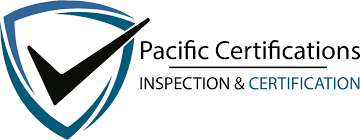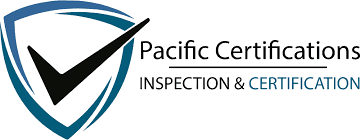ISO 38500 – IT Governance: Improving IT Governance at the Executive Level
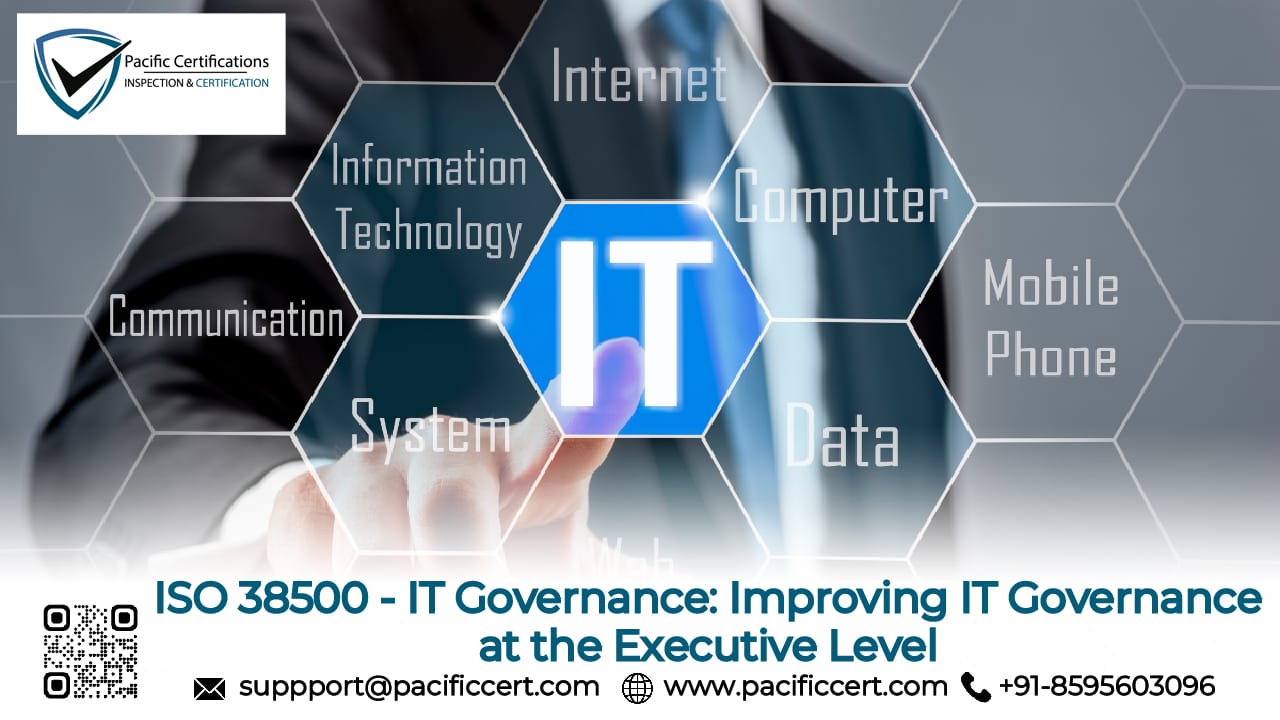
Introduction
For many organizations, information technology has moved from a back-office function to a core driver of growth. Decisions about IT now influence customer experience, data protection, and overall business performance. Yet in many companies, executives struggle to provide proper oversight. Technical choices are often left to IT departments without enough involvement from the board or senior management.
ISO 38500 addresses this gap. It is the international standard for the corporate governance of IT, offering a high-level framework for how executives should guide, monitor, and evaluate technology use within their organizations. Unlike operational standards, ISO 38500 is not about configuring servers or coding practices, it is about leadership, accountability, and aligning IT with strategic goals.
Quick Summary
ISO 38500 provides executives and boards with a practical framework for IT governance. By applying its six principles, leaders can make better decisions about IT investments, risks, and performance. While not a certifiable standard, ISO 38500 strengthens governance and complements certifiable standards like ISO/IEC 27001 and ISO 20000-
What Is ISO/IEC 38500?
ISO/IEC 38500 is a standard published by the International Organization for Standardization (ISO) that sets out principles and a model for IT governance. It applies to organizations of all sizes, from government bodies and multinationals to mid-sized businesses.
- Its focus is on ensuring that decisions about IT:
- Support the overall purpose of the organization.
- Consider both benefits and risks.
- Align with legal, regulatory, and ethical responsibilities.
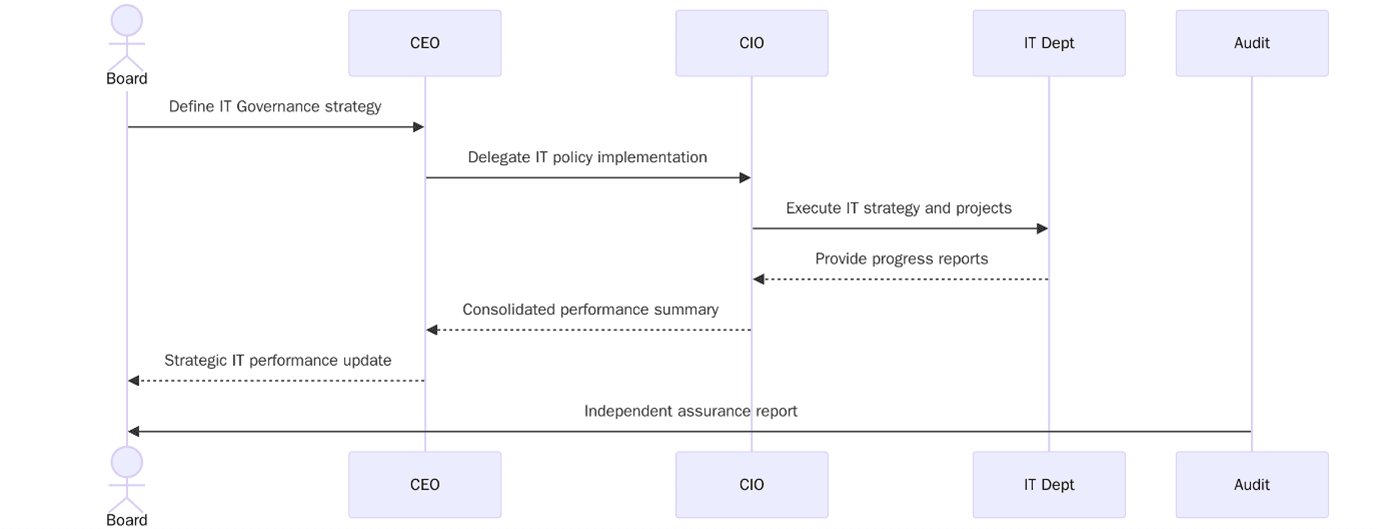
The standard provides a universal language and model for ensuring that IT activities support the organization’s goals, deliver business value, and are performed ethically and transparently.
ISO 38500 is applicable across all types of organizations, private and public sector, large enterprises or SMEs, regardless of the industry or maturity level of their IT systems.
To learn how ISO/IEC 38500 can strengthen executive-level governance in your organization, contact Pacific Certifications at [email protected].
Why IT Governance Matters at the Executive Level?
Poor IT governance has led to countless cases of failed IT investments, security breaches, misaligned strategies, and regulatory non-compliance. Executives often face the challenge of approving large-scale IT budgets without having a structured view of value, risk, compliance, and performance.
ISO/IEC 38500 solves this by offering a decision-making model that empowers leaders to:
- Evaluate how IT supports organizational goals
- Direct strategic use of information and technology
- Monitor IT activities for compliance, risk management, and performance
It also clarifies the roles and responsibilities of stakeholders in IT-related decisions, helping bridge the gap between business leadership and IT management. By implementing ISO 38500, executives can create a culture of accountability, reduce wasteful IT spending, and improve confidence in technology-led transformation.
If your leadership team is navigating complex digital investments, Pacific Certifications can help you to implement ISO/IEC 38500 governance structures that align with your business model. Email [email protected] to schedule a consultation.
The ISO/IEC 38500 Framework: Principles and Practices
ISO/IEC 38500 is built around six core principles that guide executive IT governance:
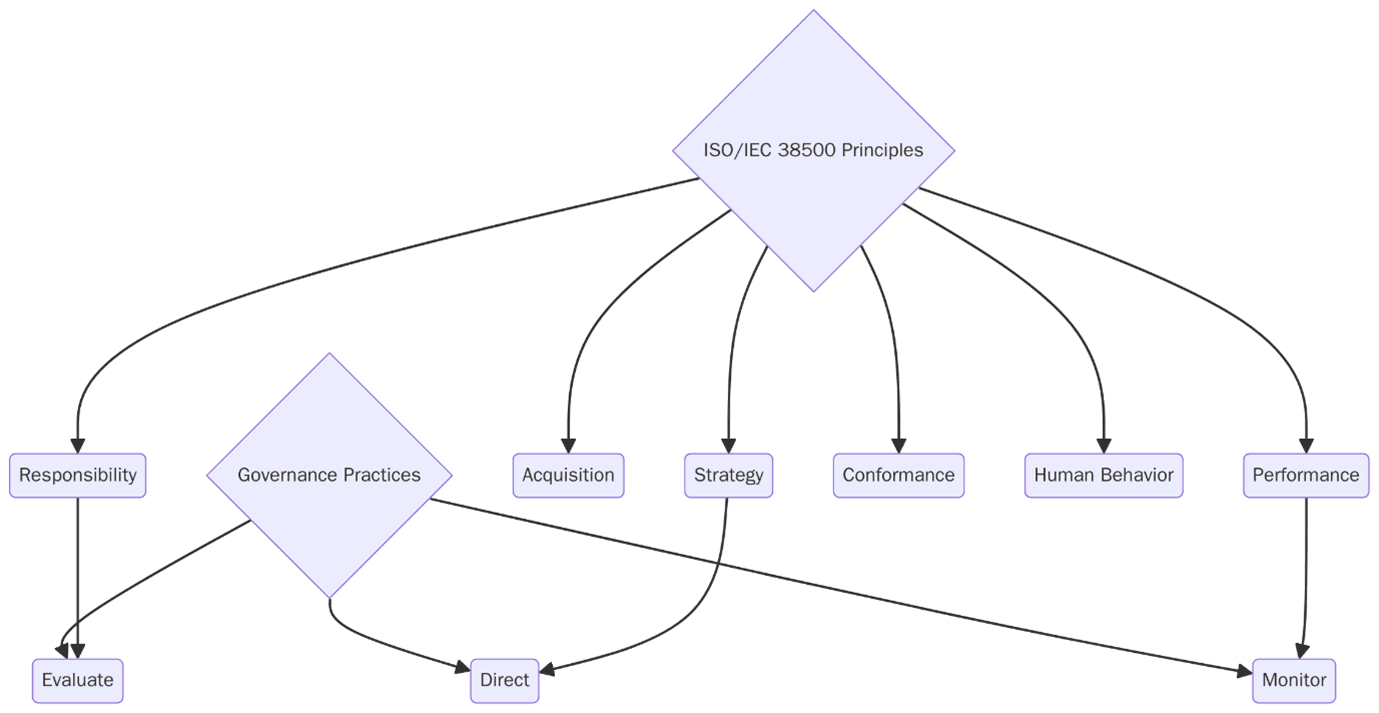
- Responsibility – Individuals and groups within the organization understand and accept their IT-related responsibilities.
- Strategy – Business and IT strategies are aligned, and IT supports the organization’s current and future objectives.
- Acquisition – IT investments are made for valid reasons, with appropriate analysis and justification.
- Performance – IT systems perform reliably, efficiently, and are fit for purpose.
- Conformance – IT complies with relevant laws, regulations, and internal policies.
- Human Behavior – The IT strategy respects current and future users’ needs and experiences.
These principles help organizations adopt a "top-down" approach to governing information and technology, ensuring IT serves the business, not the other way around.
Additionally, ISO/IEC 38500 promotes three governance tasks:
- Evaluate current and future use of IT
- Direct the preparation and implementation of IT strategies and plans
- Monitor IT performance and ensure compliance with standards and policies
This strategic model supports better alignment between technology and business, especially in environments where digital transformation is ongoing or rapid.
Tip: Boards should start by mapping current IT governance practices against the six ISO 38500 principles. This highlights gaps — such as missing accountability or poor alignment with business strategy — which can then be addressed through updated policies and reporting lines.
What are the benefits of adopting ISO 38500 for IT Governance?
Implementing ISO/IEC 38500 brings a range of benefits that go beyond IT departments—it transforms how the entire organization views and utilizes technology.
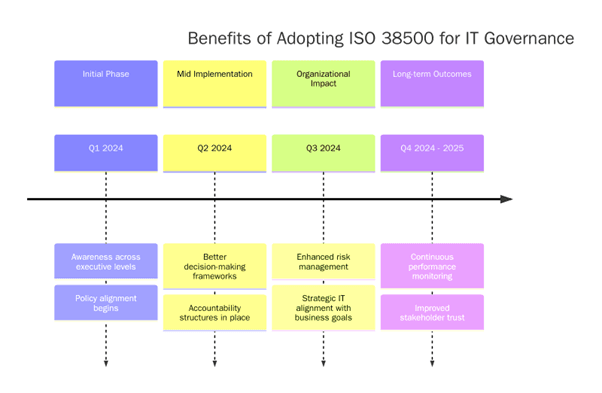
- Enhances strategic alignment between IT and business goals
- Enables informed, accountable decision-making at the board level
- Reduces risk associated with IT investments and digital initiatives
- Improves compliance with data protection, cybersecurity, and procurement laws
- Encourages transparency and ethical practices in IT operations
- Strengthens stakeholder confidence, including regulators, investors, and customers
- Optimizes IT budget allocations by focusing on value delivery and outcomes
The pressure on boards to oversee IT has never been greater. Cybersecurity incidents cost organizations over USD 4 million on average per breach (IBM, 2023), and regulators increasingly hold executives accountable for governance failures. At the same time, digital transformation projects often run over budget, with studies showing up to 70% of such initiatives failing to meet expectations.
With these realities, frameworks like ISO 38500 are gaining attention. They help executives balance innovation with control, ensuring that IT delivers measurable value while keeping risks in check. Adoption is especially strong in financial services, government, and healthcare, where IT failures can have wide public consequences.
ISO/IEC 38500 vs Operational IT Standards
While ISO/IEC 38500 is focused on governance, other ISO standards such as ISO 27001 (information security), ISO 20000-1 (IT service management), and ISO 22301 (business continuity) address operational implementation and controls.
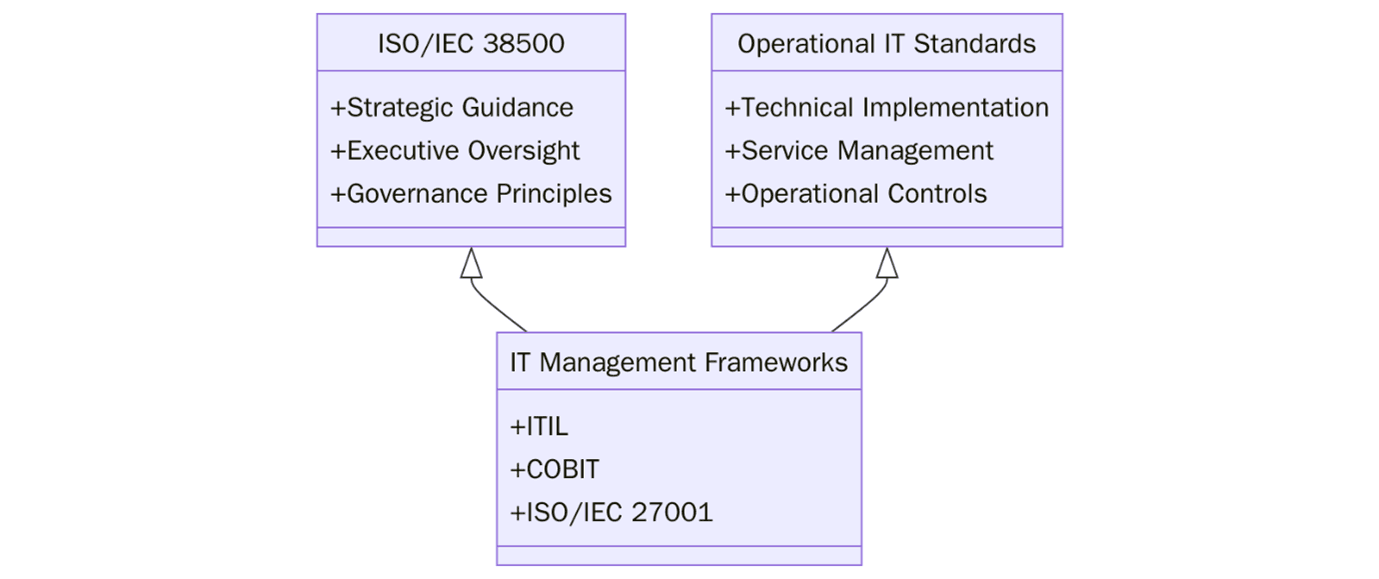
Rather than competing with these standards, ISO/IEC 38500 complements them by offering oversight and decision-making principles to ensure all IT initiatives are governed from the top. For example:
- ISO 27001 focuses on how to protect data—ISO 38500 ensures leadership understands why and how security strategies align with business goals.
- ISO 20000-1 ensures IT services meet performance targets—ISO 38500 ensures those services are aligned with enterprise needs.
In essence, ISO/IEC 38500 is the “why and who,” while operational standards are the “what and how.” Organizations adopting multiple standards benefit from a layered governance structure where strategy and execution are aligned and measured.
Need help aligning ISO/IEC 38500 with your existing ISO frameworks? Pacific Certifications can integrate IT governance with your management systems. Contact us at [email protected].
Steering IT with Confidence and Accountability
In today’s digital economy, IT investments are often among the most significant decisions an executive team will make. Without a proper governance framework, these decisions can lead to misalignment, wasted resources, and increased risk exposure.
ISO/IEC 38500 provides a trusted, internationally recognized model to steer IT confidently at the boardroom level. It helps organizations make strategic, ethical, and performance-driven IT decisions that align with business objectives.
Whether you are a public sector agency, financial institution, healthcare provider, or technology enterprise, ISO/IEC 38500 will equip your leadership with the structure, language, and insights needed to govern IT responsibly and effectively.
Pacific Certifications, an accredited ISO certification body, offers guidance, training, and certification services for ISO/IEC 38500 and other management standards. To build executive-level IT governance with ISO/IEC 38500, email us at [email protected] or visit www.pacificcert.com.
Ready to get ISO 38500 certified?
Contact Pacific Certifications to begin your certification journey today!
Author: Sony
Suggested Certifications
Read more: Pacific Blogs
